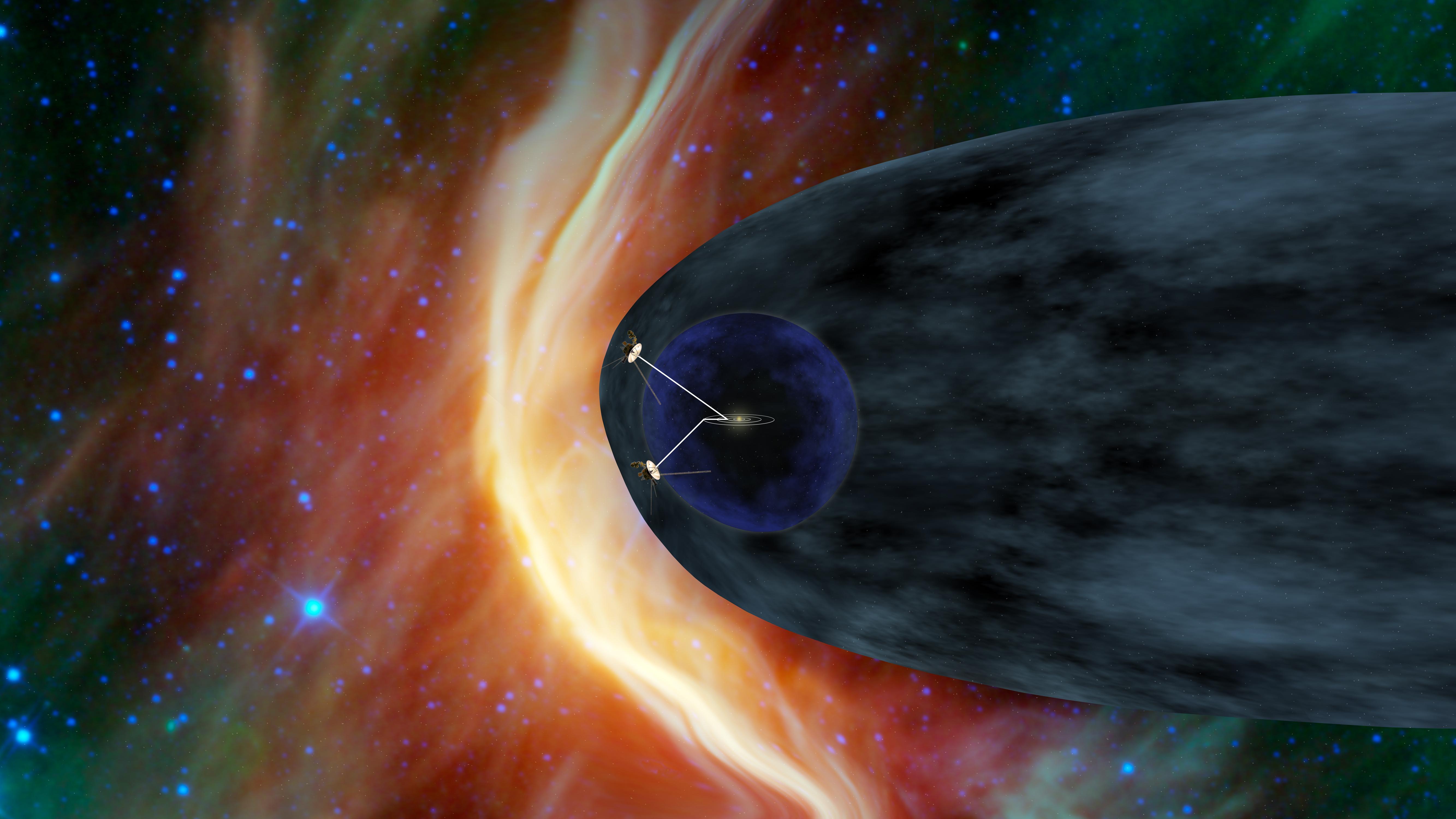We're open daily! View holiday hours
Science News
Where is Voyager 1?
July 2, 2013

By Alyssa Keimach
How large is the heliosphere? The region of interstellar space dominated by the Sun? The Voyager 1 spacecraft has a partial answer: much larger than expected!
The heliosphere, composed of the sun’s magnetic field and a high-velocity stream of charged particles called the solar wind, creates an enormous bubble around our solar system. The charged particles move at about a million miles per hour, only slowing down when they near the region where the pressure of interstellar gas dominates. We thought Voyager 1, our farthest spacecraft, had arrived at edge of the heliosphere, but there is something fishy about Voyager 1’s new data.
Launched in 1977, the twin spacecraft Voyager 1 and Voyager2 have both entered an area called the heliosheath, where the solar wind slows, even though they’re headed in different directions away from the Sun. Voyager 1 lies farthest away, 11 billion miles from Earth, and at this distance it encountered a “magnetic highway.” Here the Sun’s magnetic field connects with the interstellar magnetic field, allowing for an exchange of charged particles between inside and outside the heliosphere.
Voyager 1 measured the highest rate of change so far between incoming and outgoing particles. “We saw a dramatic and rapid disappearance of the solar-originating particles. They decreased in intensity by more than 1,000 times, as if there was a huge vacuum pump at the entrance ramp onto the magnetic highway,” said Stamatios Krimigis, the low-energy charged particle instrument’s principal investigator at the Johns Hopkins University Applied Physics Laboratory in Laurel, Maryland. In this same region, scientists first detected the low-energy cosmic rays that originate from dying stars.
This should indicate that the spacecraft has reached interstellar space, except scientists have not yet seen the final indicator: an abrupt change in the direction of the magnetic field.
“If you looked at the cosmic ray and energetic particle data in isolation, you might think Voyager had reached interstellar space, but the team feels Voyager 1 has not yet gotten there because we are still within the domain of the Sun’s magnetic field,” said Edward Stone, Voyager project scientist at the California Institute of Technology in Pasadena.
So how much farther does Voyager 1 need to travel until it reaches interstellar space? Scientists estimate several months or even years until Voyager 1 experiences a change in magnetic field direction. For now, they have named this strange zone the heliosheath depletion region. Catchy, eh?
Stay tuned for more Voyager discoveries from the edge of interstellar space!
Alyssa Keimach is an astronomy and astrophysics student at the University of Michigan and interns for the Morrison Planetarium.
Image: NASA/JPL-Caltech